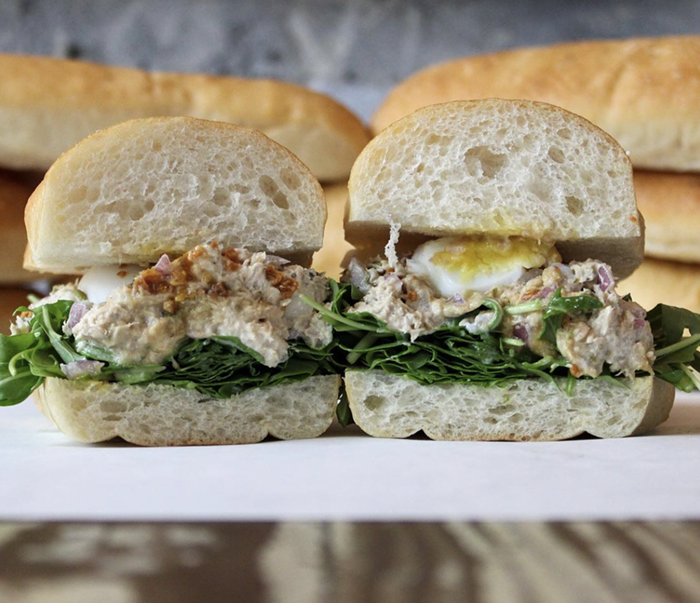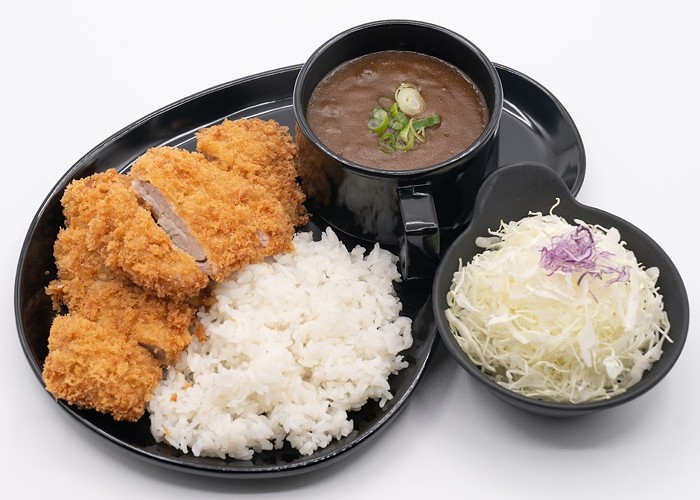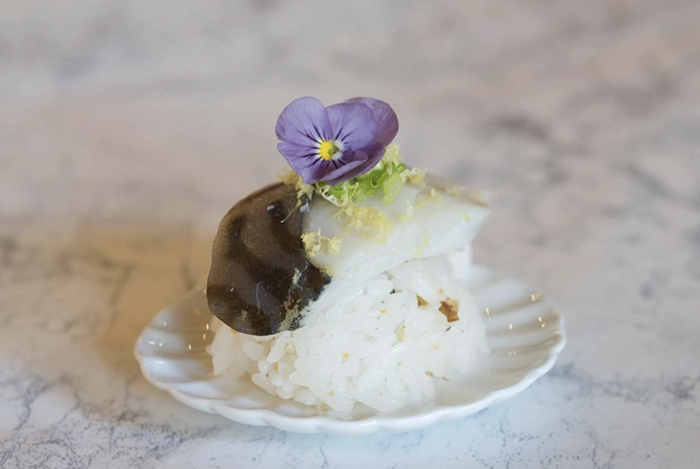On a Saturday evening, a line at least 30 people long stretches out the door of D'Ambrosio Gelato on Ballard Avenue Northwest. No one is complaining. As more people line up—no one's discouraged by the wait—others walk out of the shop, parading past with little green and orange plastic cups filled with melting heaps of gelato in flavors like fiordilatte (creamy milk), variegato biscotto (crunchy biscuit), and "woman's kiss" (dark chocolate and almond).
"Okay, this vanilla is pretty much amazing," says a guy, then pushes a spoonful toward his date. She already has a mouthful of some kind of berry sorbet, but she takes a bite anyway. "Oh my god!" she exclaims.
The line grows even longer.
Inside, 24 flavors of freshly made gelato and sorbet await: Nutella, yogurt and berries, meringue, cantaloupe, lemon, and more. I choose Nutella and fichi & caramello (fig and caramel), and back outside I have an "Oh my god!" moment of my own. It is the richest, densest gelato I have ever tasted, but it isn't heavy on the tongue. The fig and caramel has chunks of chewy, moist fruit throughout; in the Nutella, swirls of rich chocolaty ribbons are ideally balanced by the light, clean base. It's not at all icy, and unlike even the densest ice cream, there isn't even a molecule of air whipped into it. It is 100 percent flavor.
A few days later, around 10:00 a.m., owner Marco D'Ambrosio ushers me through the store's front door and locks it behind us. "If we don't keep the door closed, people will come in, whether we are open or not," he says. I mention how long the line was the other night, and he grins. "It's been like that since we opened."
Marco leads me back to the kitchen, where his father, Enzo D'Ambrosio, is making batches of nicciola (hazelnut), yogurt naturale (natural yogurt), crema all'uovo (egg cream), and caffe scuro (dark coffee). The shop makes only traditional Italian gelato, so you won't see any experimental flavors that involve bacon or cayenne pepper here. Enzo is a university-certified master gelataio, with certificates from the Gelatieri Artigiani Italiani Associati—the organization of Italian artisan gelato makers—hanging on the wall to prove it. The program takes more than a year and a half to complete. Back in Rome, where he's from, he was responsible for making gelato for about 45 different shops. He has been making gelato for 15 years.
"He's going to make fiordilatte first," Marco tells me. "It's like a pizza margherita—it's the simplest thing you can do. In Italy, 99 percent of Italians know if you want to know if a gelato shop is good, you taste the fiordi-latte."
Enzo at work is like a scientist. Everything is measured and weighed with scrupulous care; all his utensils are arranged within arm's reach. He offers up a sample of the fiordilatte before pouring it in the batch freezer—it's the sweetest, coldest, cleanest milk I've ever tasted.
"Everything I do, I do the same way," Enzo tells me in a thick Italian accent. He extracts another bucket of the cream, milk, and sugar mixture from a pasteurizing machine in the corner. "It must be perfect."
Enzo walks over to a set of neatly stocked shelves and grabs the things he needs for the next batch, ricotta stregata—"bewitched ricotta," a combination of ricotta, hazelnuts, and chocolate. The shelves hold a collection of ingredients that would make Augustus Gloop's sugar-addled brain explode—candied lemon and orange peel from France; chocolate from Belgium; figs, brandied cherries, and chestnuts from Italy. The pistachios are known as the "green gold of Sicily," Marco tells me; they grow in the foothills at the base of the Mount Etna volcano, and they cost six times more than your average pistachios. The hazelnuts come from Piedmont and have the highest oil content of any hazelnut in the world. Enzo gives me a few to sample—they're way bigger than any other hazelnut I've ever seen and way richer with concentrated hazelnut goodness. He grins and pops a few in his mouth as well.
In the fridge, there are cartons of locally produced cream and yogurt, tins of Calabro ricotta cheese—"The best ricotta cheese you can buy in Seattle," says Marco—and flats of strawberries, blueberries, lemons.
"[In the program,] you learn techniques," says Enzo. "They go into detail of the chemistry..." He pauses for a moment and smiles, then he says something in Italian to his son.
"Everything we use is the best you can get," says Marco, translating for his father. Enzo is now layering creamy ricotta gelato with ladles full of melted chocolate and handfuls of ground up hazelnuts. "The difference between making an okay product or an exceptional one is in the details. That's why my father studied the chemistry, so he knows what exactly is the structure of the product." Case in point: For some of the fruit recipes, Enzo adds up to three different kinds of sugar to his mixture—there's regular granulated sugar, a superfine sugar, and a golden sugar syrup. "It's a balance of liquid and solid ingredients," explains Marco. "Each sugar has an action. You can have sweetening action, a textural action—these are the secrets."
At exactly noon, D'Ambrosio Gelato is officially open for business. A mother and daughter have been waiting outside. Then the phone rings; a regular customer is calling to ask Marco to put aside two pints of the pistachio to be picked up later. A couple mothers and their kids walk through the door, and then some businessmen line up behind them.
The rush is beginning all over again. Marco smiles. "I think gelato is one of the happiest products in the world," he says. "And serving a product that makes everyone happy is our mission." ![]()




















